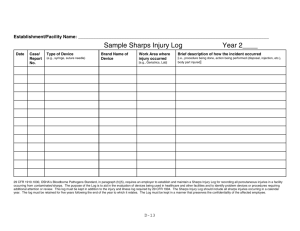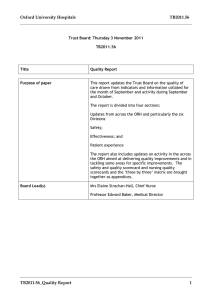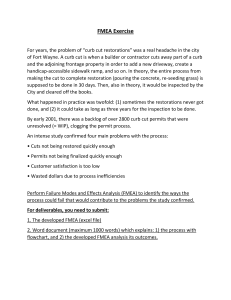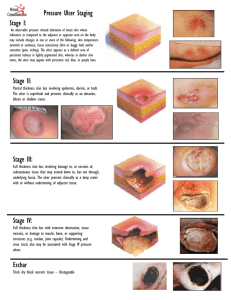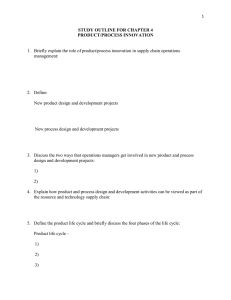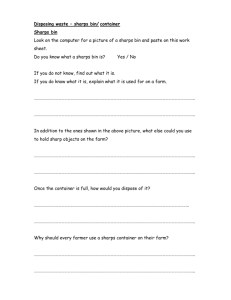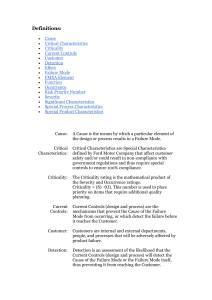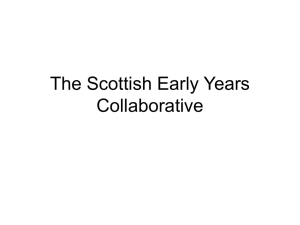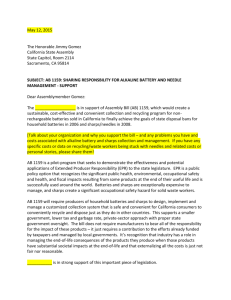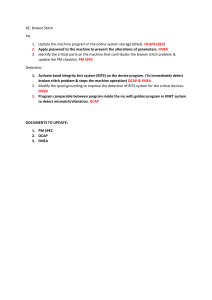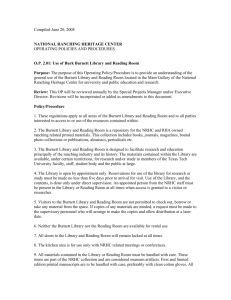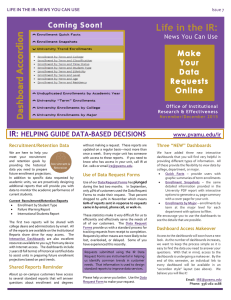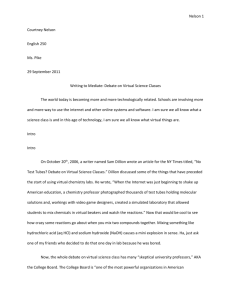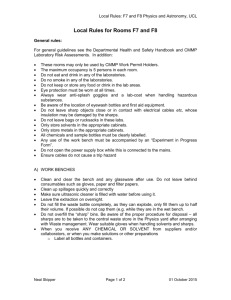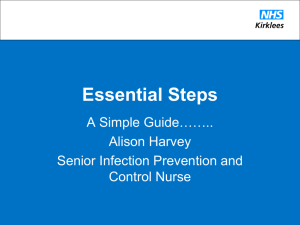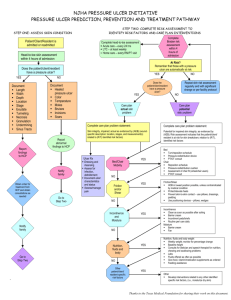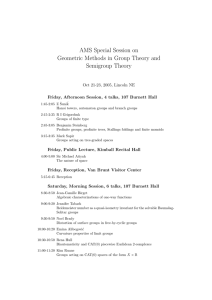A framework for the measurement and monitoring of safety
advertisement
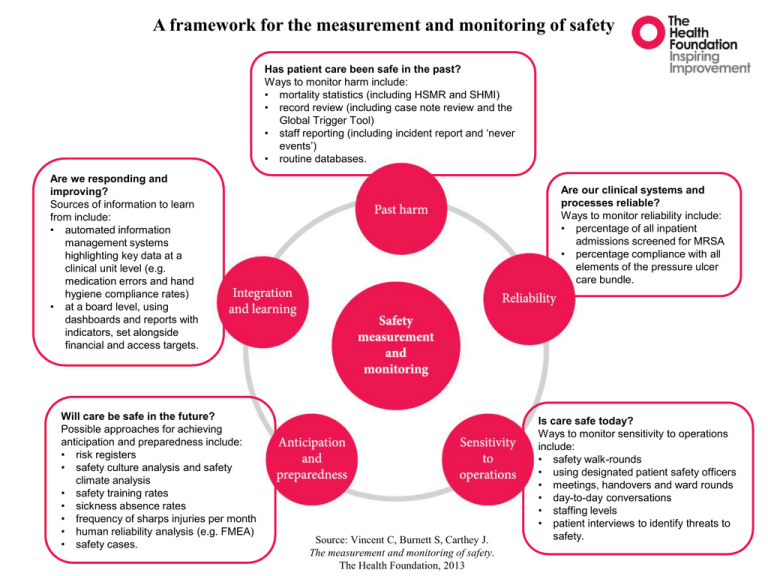
A framework for the measurement and monitoring of safety Has patient care been safe in the past? Ways to monitor harm include: • mortality statistics (including HSMR and SHMI) • record review (including case note review and the Global Trigger Tool) • staff reporting (including incident report and ‘never events’) • routine databases. Are we responding and improving? Sources of information to learn from include: • automated information management systems highlighting key data at a clinical unit level (e.g. medication errors and hand hygiene compliance rates) • at a board level, using dashboards and reports with indicators, set alongside financial and access targets. Will care be safe in the future? Possible approaches for achieving anticipation and preparedness include: • risk registers • safety culture analysis and safety climate analysis • safety training rates • sickness absence rates • frequency of sharps injuries per month • human reliability analysis (e.g. FMEA) • safety cases. Are our clinical systems and processes reliable? Ways to monitor reliability include: • percentage of all inpatient admissions screened for MRSA • percentage compliance with all elements of the pressure ulcer care bundle. Source: Vincent C, Burnett S, Carthey J. The measurement and monitoring of safety. The Health Foundation, 2013 Is care safe today? Ways to monitor sensitivity to operations include: • safety walk-rounds • using designated patient safety officers • meetings, handovers and ward rounds • day-to-day conversations • staffing levels • patient interviews to identify threats to safety.
